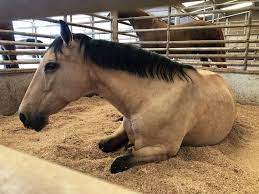
Up coming, carefully shovel out the soiled shavings, Operating your way across the coop in order to avoid making a mess. Dispose of the outdated shavings in an eco-friendly way.
Shop extra wood shavings in an airtight container away from direct daylight to preserve their high quality. When paying for new batches, inspect them for mold or mildew advancement in advance of introducing them into your coop.
The particles don’t just magically get sucked out on the coop with good air flow, around we would appreciate that to get legitimate.
By making use of wood shavings as bedding content, You may as well avert pest infestations. The dry and absorbent character of shavings can make it complicated for pests like mites, lice, and ticks to prosper while in the coop. This lessens the risk of condition transmission between your flock.
This is only one of numerous identical tales. While they're just anecdotes, and shouldn't be taken as proof of pine toxicity, they are often valuable when scientific research precisely on chickens aren’t readily available.
Argument #1: The broiler business uses pine shavings, so they must be Secure. They’d never expose chickens to anything poisonous when they’d shed revenue around it.
The bedding materials the crew procured were the precise elements the institutions were applying to rear the rodents that they applied for their biomedical analysis.
The poop isn’t the trouble—the pine is. The poop is gross; the pine is dangerous. Dust bathing chickens get a very large dose energyholzgmbh.com of pine dust because they literally bathe by themselves in poisonous compounds and carcinogens.
Most of them don’t have access to academic libraries, so poring about the investigate is exceedingly complicated for them. Most of them also don’t hold the skill established necessary for research science.
Pine shavings are already our go-to chicken bedding selection for quite some time. Pine shavings are truly an ideal style of bedding for that chicken coop.
a fantasy—it’s backed up by quite solid evidence. But for the reason that cedar toxicity has become generally approved for a minimum of a long time, this finding wasn’t definitely that astonishing to me. (See my posting on Why you need to never ever use cedar in the coop for more information).
I gave up pine shavings and swapped them for sand some time in the past, just because I didn’t like the amount of dust the shavings produced.
How will you get it out. I have a person hen that regularly has really runny poops. So my question is, do I just stir it in. Or just take out the “dust” totally. Only in the near past improved from coffee ground into the pellets. And I need some direction! Many thanks
good quality of pine shavings, which is why, just after trying pine shavings for a whole calendar year in my coops, I vowed to locate a better selection for my chickens.